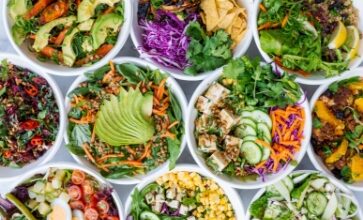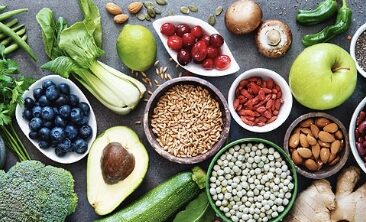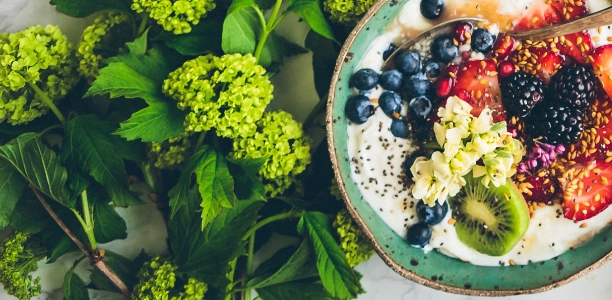
The Art of Menu Design: 8 Essential Tips
Designing a menu is an art that goes beyond listing dishes. It’s a strategic tool that can boost your business’s success. A well-crafted menu enhances the dining experience and influences customer choices.
Every restaurant owner should understand the power of effective menu design. It reflects your brand and sets the tone for your establishment. A thoughtfully designed menu can increase sales and customer satisfaction.
In this guide, we’ll explore essential menu design tips. These insights will help you create a menu that captivates, engages, and helps you increase your profit margins.
1. Understand Your Target Audience
The foundation of effective menu design is understanding your target audience. Knowing who dines at your restaurant helps in crafting a menu that speaks to them directly. This understanding dictates the style, language, and even pricing of menu items.
Consider key demographics such as age, dietary preferences, and spending habits. Are your customers adventurous eaters, or do they prefer familiar flavours? Tailoring your menu to align with these preferences can significantly enhance their dining experience and satisfaction.
An effective way to grasp audience needs is by gathering customer feedback. Use surveys, reviews, and social media interactions to guide your menu decisions. Keep these pointers in mind:
- Identify demographic characteristics
- Understand dining preferences
- Gather and analyse customer feedback
2. Embrace Minimalist Menu Design
Minimalist menu design is a powerful tool for clarity. When we design menus for customers at Birchall Foodservice, we believe that less is more. Overwhelming diners with complicated designs, too many fonts, and too many bold colours will simply frustrate your customers. By focusing on simplicity, you help customers make decisions quickly without overwhelming them. A less cluttered menu ensures that the offerings are both visible and inviting.
To achieve a minimalist design, limit the number of items. Fewer options can guide customers toward signature dishes or top sellers. The design should incorporate ample white space, enhancing readability and visual appeal. A minimalist approach often includes:
- Clear typography with simple fonts
- Essential information only, avoiding unnecessary details
- Thoughtful use of space to highlight key dishes
This style of menu is not only modern and sophisticated but also aligns well with efficient service and a seamless dining experience.
3. Be Strategic with Menu Layout and Organisation
The layout of a menu significantly impacts its effectiveness. A strategic menu layout can influence what customers notice first. It’s crucial to direct attention to high-margin items and specials.
Begin with a logical progression. Arrange dishes from starers to desserts in a way that mirrors the dining experience. This flow guides customers naturally through your menu. Using distinct sections with clear headings aids in easy navigation. Consider these elements:
- Group similar items together
- Use borders or boxes to highlight specials
- Place high-margin items in prominent positions (top right is the premium spot on a menu)
For instance, the top right corner of a menu is often the first spot diners glance at. Capitalise on this by placing specials or chef recommendations here. Diners will then move to the top left, and then read the menu like a book. Keep this flow in mind when designing your menu.
You should also keep in mind the ‘top 2 and bottom item’ rule when listing dishes in each segment. This means that the first 2 items and the last item in a list (such as your main meals, or breakfast items) should be your highest margin items, as these are the items that diners pay most attention to.
A well organised menu not only stops your diners from becoming overwhelmed or frustrated, but also boosts sales by subtly guiding customer choices. Proper layout and organisation creates a visually appealing menu that makes decision-making simple and enjoyable.
4. Try to Keep Your Menu to One Page
Here at Birchalls, when we design menus for customers, we try to keep everything on one page. More traditional ‘book style’ menus may look nice, but these menus require your diners to do more work when choosing their meal. Plus, with book style menus, you run the risk of people missing important items, and it isn’t as easy to highlight high margin meals. If you can’t fit everything on one page, then your menu might be too large.
We recommend using A3 or A4 placemat style menus. These keep everything to one page, and are easy to wipe down and clean at the end of service. Plus, they’re usually cheaper to print. If you have multiple menus, say for drinks or Sunday service, then these menus should be designed separately, and not all squashed into one menu.
Keep these benefits of one page menus in mind:
- Improves customer experience by making choices faster and simpler
- Increases profitability by ensuring high-margin dishes are more visible
- Enhances hygiene and practicality with easy-to-clean, cost-effective formats
5. Craft Engaging Menu Item Descriptions
Descriptive language is a powerful tool in menu design. It can turn a simple dish into an enticing experience. Words should not only describe ingredients but evoke senses and emotions. Consider vivid descriptions that paint a picture of the dish’s texture and taste.
Avoid generic terms and aim for specificity. For example, instead of “chicken sandwich,” use “grilled herb chicken on artisan rye.” This approach not only makes the menu engaging but also boosts customers’ appetites. Using descriptive language effectively involves:
- Highlighting unique ingredients or cooking methods
- Evoking sensory experiences with vivid adjectives
- Providing interesting backstories or origins
Such language can enhance the perceived value of menu items. This leads to increased anticipation and satisfaction from diners. Crafting a menu with engaging descriptions goes beyond listing dishes, it’s about making each dish sound like a potentially unforgettable experience.
Here are some useful examples of vivid adjectives:
Taste & Flavour
- Zesty
- Tangy
- Smoky
- Sweet & savoury
- Bold
- Rich
- Creamy
- Buttery
- Refreshing
Texture & Mouthfeel
- Crispy
- Crunchy
- Velvety
- Silky
- Flaky
- Tender
- Juicy
- Succulent
- Melt-in-the-mouth
Aroma & Sensation
- Aromatic
- Fragrant
- Spiced
- Earthy
- Freshly baked
- Chargrilled
- Wood-smoked
- Herb-infused
- Sizzling
6. Use Colours to Enhance Appeal
Colours can evoke emotions and influence choices. A well-thought-out color scheme can elevate a dining experience. It’s essential to understand how color psychology applies to menu design.
When selecting colours, consider the ambience and theme of your restaurant. The chosen palette should be cohesive with your brand identity. Here are some colour tips:
- Warm colours, like red and orange, can stimulate appetite
- Cool colours create a calm, elegant atmosphere
- Contrasting colours enhance readability
Colours should guide the guest’s attention subtly. They can highlight sections or spotlight special items. Yet, balance is crucial. Overusing bold colours might overwhelm diners. A refined colour scheme adds sophistication, making the menu not just a list, but a visual delight.
Here are some effective colour pairings that you might want to include in your menu:
- Warm appetising pair: Deep red with warm cream — stimulates appetite while keeping it elegant
- Elegant contrast: Charcoal grey with soft gold — adds sophistication and makes specials stand out
- Fresh & natural: Forest green with crisp white — ideal for healthy or sustainable food concepts
- Modern minimal: Black with muted beige — clean, contemporary, and highly readable
- Energetic accent: Burnt orange with dark brown — warm and rustic, great for casual dining
- Calm & refined: Navy blue with pale grey — conveys trust, quality, and a more premium feel
7. Implement Effective Pricing Strategies
Pricing is more than just numbers on paper. It’s a psychological tool that can sway customer decisions. Careful pricing strategies can enhance perceived value and drive sales.
Smart pricing techniques include subtle cues like removing currency symbols. This reduces the focus on cost. Positioning higher-priced items near less expensive ones can also make the latter seem more affordable. Here are some strategic pricing tips:
- Use numbers ending in .95 for a subtle savings perception
- Use whole numbers like ’10’ or ’15’ for a more premium feel
- Highlight items with the best profit margins
8. Always Test and Review
The menu is a dynamic part of your restaurant’s operations. Continual testing and reviewing ensures it stays relevant and effective. Regular updates can highlight seasonal changes and menu innovations.
Testing different designs allows you to find what best resonates with your audience. Use feedback from customers and staff to refine your approach. Consider the following steps:
- Conduct customer surveys to gauge menu effectiveness – social media is great for this
- Host focus groups for in-depth feedback
- Test new items or layouts during quieter hours
This ongoing process can lead to discovering what your customers really value. Remember, a refined menu is often the result of constant trial and improvement.
Conclusion
In the competitive restaurant industry, effective menu design is essential. A thoughtful menu enhances customer experience and boosts sales. By implementing these key tips, you can make a significant difference.
Regular updates, strategic layouts, and bespoke designs ensure your menu stands out. Remember, your menu not only communicates offerings but can also tell your restaurant’s story and generate extra sales.
If you need assistance with your menu design, then don’t hesistate to get in touch. We’re here to help.






